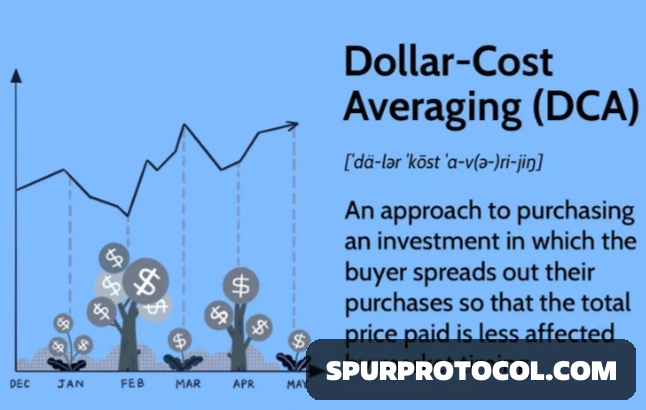In the dynamic world of cryptocurrency, where market prices can experience significant fluctuations, investors often seek strategies to mitigate risks and optimize returns. One such approach is Dollar-Cost Averaging (DCA), a method that involves investing a fixed amount of money at regular intervals, regardless of the asset's price. This strategy can be particularly advantageous during market downturns, offering a systematic way to build a position over time.
What is Dollar-Cost Averaging (DCA)?
Dollar-Cost Averaging is an investment technique where an investor allocates a consistent amount of capital to purchase a particular asset at predetermined intervals, irrespective of its current price. This approach results in acquiring more units when prices are low and fewer units when prices are high, potentially lowering the average cost per unit over time. By adhering to a regular investment schedule, DCA helps investors avoid the pitfalls of market timing and emotional decision-making.
Applying DCA in Cryptocurrency Investments
The cryptocurrency market is renowned for its volatility, with prices of digital assets like Bitcoin and Ethereum often experiencing rapid and unpredictable changes. Implementing DCA in this context involves:
1. Selecting the Cryptocurrency: Choose a digital asset that aligns with your investment goals and risk tolerance.
2. Determining Investment Intervals: Decide on the frequency of your investments—be it daily, weekly, or monthly.
3. Setting Investment Amounts: Decide on the fixed amount to invest at each interval.
4. Automating Investments: Utilize platforms that support automated DCA to ensure consistency and remove emotional biases from the investment process.
Benefits of DCA in the Current Market Dip
During periods of market downturns, DCA offers several advantages:
Mitigation of Market Timing Risks: Attempting to time the market can be challenging, especially during volatile periods. DCA removes the need for precise market predictions, allowing investors to benefit from market recoveries over time.
Accumulation of Assets at Lower Prices: Investing a fixed amount during a market dip enables the purchase of more units of the cryptocurrency, potentially increasing the overall value of the investment when the market rebounds.
Reduction of Emotional Investing: By adhering to a predetermined investment schedule, DCA helps investors avoid impulsive decisions driven by market fear or greed, leading to more disciplined and rational investment behavior.
Considerations and Potential Drawbacks
While DCA offers numerous benefits, it's essential to be aware of its limitations:
Missed Opportunities in Bull Markets: In rapidly rising markets, DCA may result in a higher average purchase price compared to lump-sum investments made at the outset.
Transaction Costs: Frequent investments can incur transaction fees, which may erode returns over time. It's crucial to consider these costs when setting up a DCA strategy.
Long-Term Commitment: DCA is most effective when practiced over extended periods. Short-term market fluctuations may not significantly impact the average cost per unit in the immediate term.
Implementing DCA in the Current Market Environment
Given the current market dip, DCA can be an effective strategy to build a position in cryptocurrencies. To implement DCA effectively:
Conduct Thorough Research: Ensure that the cryptocurrencies you invest in have strong fundamentals and long-term viability.
Set Clear Investment Goals: Define your investment horizon and risk tolerance to tailor the DCA strategy accordingly.
Monitor and Adjust: Regularly review your investment strategy to ensure it aligns with your financial goals and market conditions.
Conclusion
Dollar-Cost Averaging presents a disciplined and systematic approach to investing in cryptocurrencies, particularly beneficial during market downturns. By investing a fixed amount at regular intervals, investors can potentially lower their average cost per unit and reduce the impact of market volatility. However, it's essential to consider the strategy's limitations and ensure it aligns with your overall investment objectives and risk tolerance.

